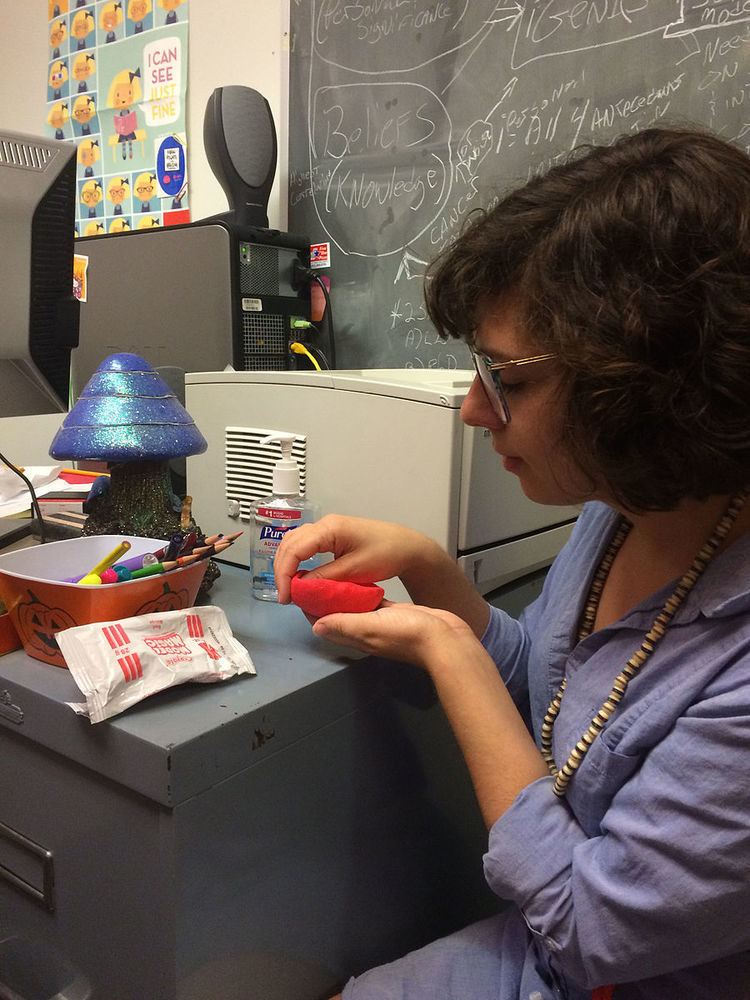 | ||
A library makerspace is an area and/or service that offers library patrons an opportunity to create intellectual and physical materials using resources such as computers, 3-D printers, audio and video capture and editing tools, and traditional arts and crafts supplies. In the field of library science, makerspaces are classified as a type of library service offered by librarians to patrons.
Contents
Definition
In a library makerspace or maker program, patrons of varying ages can work together, alone, or with library staff on creative projects. These spaces often give community members access to tools, technology, and social connections that may not be easily accessible otherwise. The goal of a makerspace is to allow patrons to learn through direct experimentation and from each other. Library makerspaces do not require specified areas; a pre-existing space can be temporarily modified (or "made") to better suit the needs of participants. It is more about the intentions of the makers than about the qualities of the space itself.
History
Beginning around 2006, the "maker movement" grew out of DIY culture. Libraries took notice and began offering programs and redesigning spaces to address related interests within their communities. The first public library with a maker space was the Fayetteville Free Library.
Purposes
A library makerspace is intended to allow community members to experience technology or activities that they previously were not able to access. As many maker spaces include technology like 3D printers, sewing machines, soldering guns, coding, robotics, and wood carving machines, patrons are invited to experiment freely. The purpose of a maker space is often expressed to be inspiring an interest in science, technology, design, and life-long learning in the people who are served by the library. Over time, it is expected that the available activities within each individual maker space will grow to reflect the interests of each community in which the library is housed. Makerspaces are also intended to allow minorities or underrepresented populations, like women, or people with disabilities, to become involved with technology and fields they may not have previously considered.
Types of activities and technology
There are many types of makerspaces offered as a library service. They are usually developed around a certain type of medium, technology, or even patron age group. Some examples include computer programming and coding, 3D modeling and printing, games, and traditional arts and crafts. Although experts in the area may be available, the community atmosphere of the space allows patrons to learn from each other and experiment rather than receive lessons.
Maker spaces have also grown to allow patrons to take classes to develop a certain skill, like cooking, sewing or yoga.
United States
Public libraries:
Criticism
One criticism of maker spaces for libraries is that they may attract a specific demographic, e.g., the tech-savvy, while failing to welcome others from the community. Some librarians feel that the library should not be a place for manufacturing, and some contend that over-emphasis on high-tech equipment such as 3D printers is not in the true spirit of the maker movement. Implementing a library makerspace may be costly in the setup phase, and as some tools and equipment can have associated hazards, there is the issue of liability to consider.
